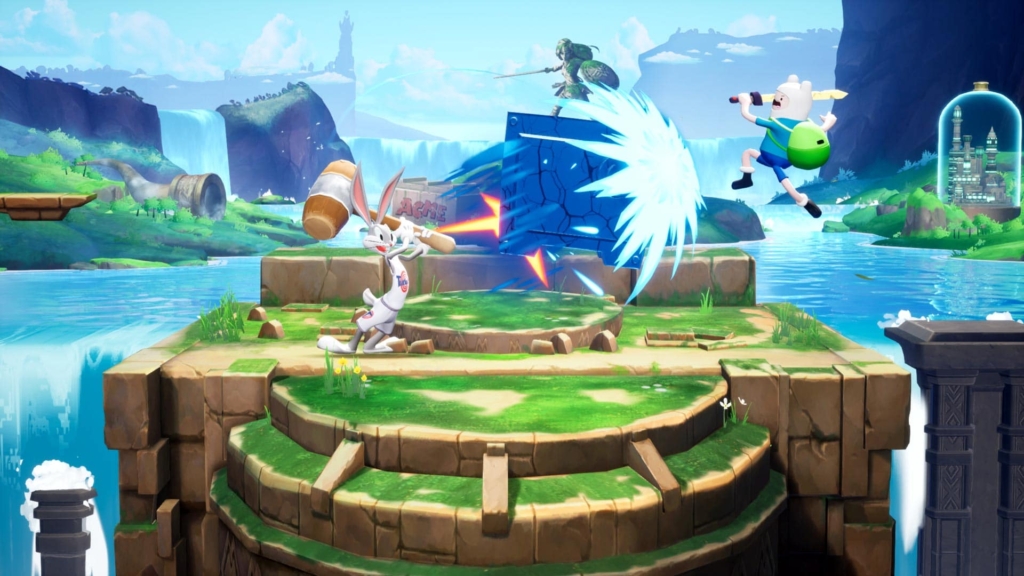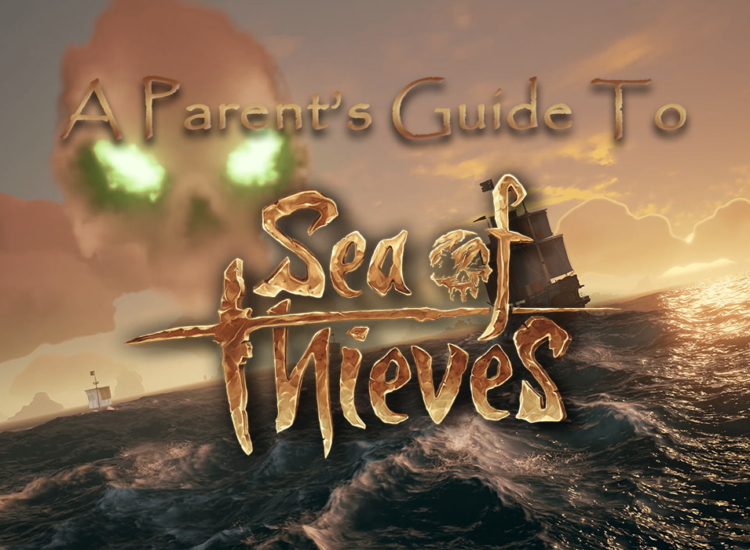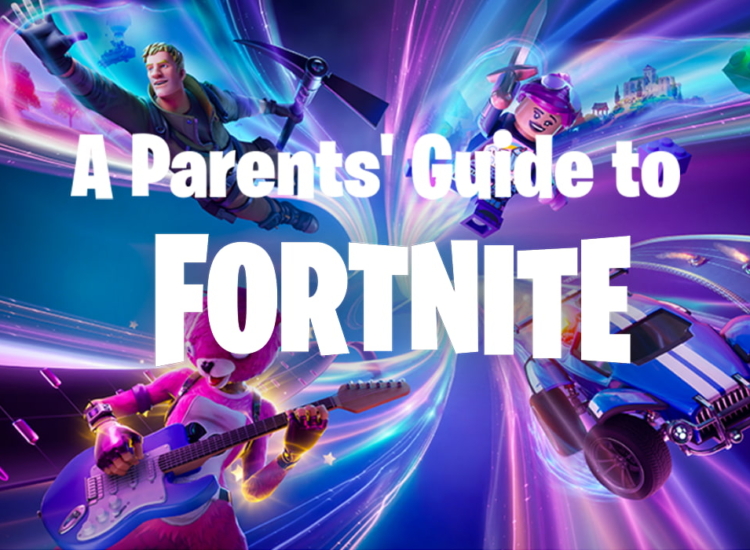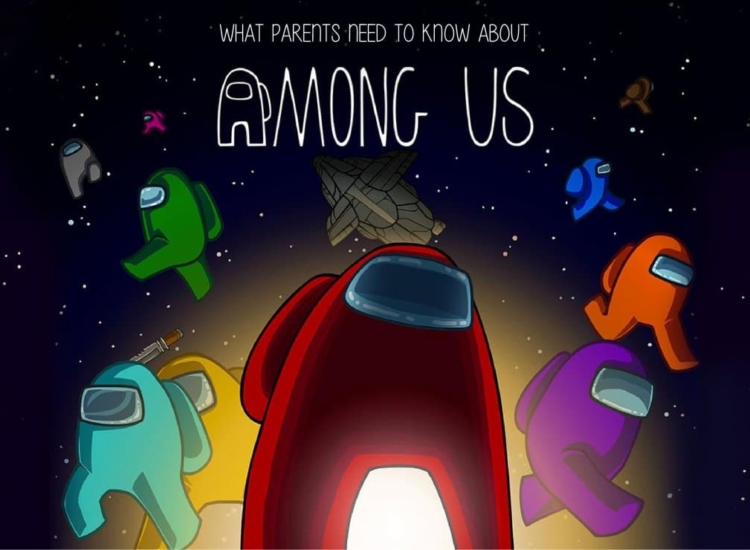A Parent’s Guide To MultiVersus
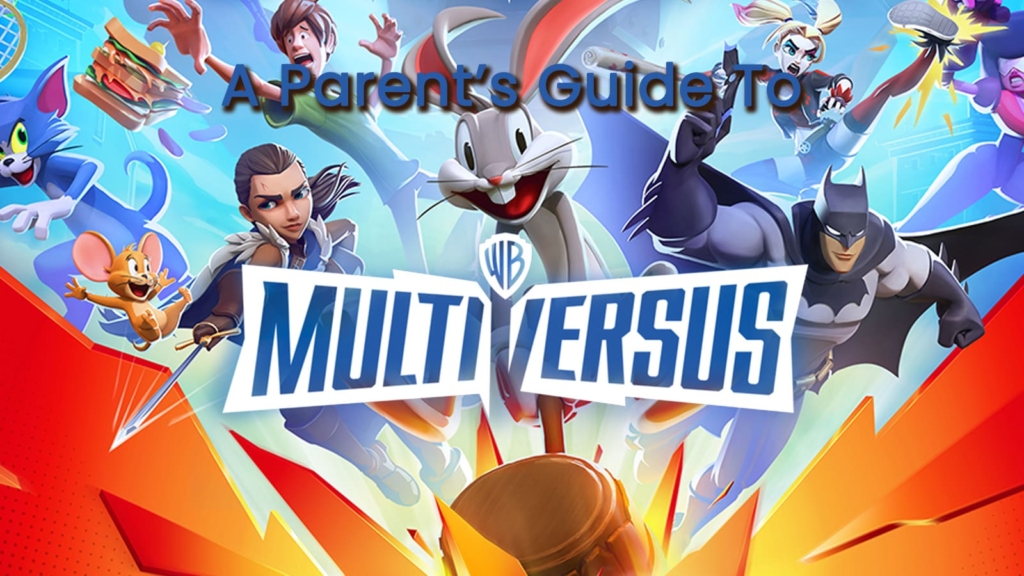
MultiVersus is a cartoon-like 2D brawling game. Up to four players at once take on the role of famous characters from Warner Bros.-owned fictional worlds to fight in combat arenas. The expanding roster of characters include much-loved figures such as Bugs Bunny, Wonder Woman, Batman, and Arya Stark who leap, bounce, swoop, and twist as they seek to best their opponents with a variety of punches, kicks, zaps, dodges, and individual special moves. Read on to find out if your family is ready to jump into the MultiVersus fray.
Is MultiVersus Appropriate for Kids?
MultiVersus is rated T for Teen by the ESRB, with Content Descriptors for Fantasy Violence and Language. The rating for MultiVersus also has an Interactive Element – In-Game Purchases – which let’s you know that you have the option to spend real-world currency on additional content.
This game features cartoon and mild superhero-movie style violence as well as light profanity from characters that’s consistent with their personalities in other media. For example, Harley Quinn says “bitchin”, and Batman uses a phrase that includes “badass”. An optional filter is available to toggle swearing on and off.
It’s designed for two-vs-two gameplay via online or offline contests but can also be played as a one-vs-one game, or in single-player mode.
Where Can I Play MultiVersus and How Much Does it Cost?
MultiVersus is available for PlayStation 5, PlayStation 4, Xbox Series X|S, Xbox One, and Windows PC. The game features full cross-play support, meaning that owners of different platforms can play against one another online.
Players can download and play MultiVersus for free, with the ability to earn in-game cosmetics by completing challenges and missions. At first, only a limited number of characters are available, but others are unlocked as the player becomes more proficient.
As mentioned, MultiVersus features in-game purchase options like Premium Battle Passes (in addition to a free Battle Pass), buffs, perks, costumes, and more – all of which can be obtained with the game’s premium currency called Gleamium. Players will have the option to purchase Gleamium or earn it through gameplay. If you’re thinking about purchasing Gleamium you can get:
- 450 Gleamium for $4.99
- 1,000 Gleamium for $9.99
- 2,200 Gleamium for $19.99
- 6,000 Gleamium for $49.99
While Gleamium is the only premium currency (meaning the only one you can purchase directly) players can also earn Fighter Currency, by completing certain in-game challenges, events, missions, and more. Fighter Currency can only be used to unlock new characters. Players can also earn Perk Currency, which can be exchanged for character perks that – when attached to a character – give them power ups. Like Fighter Currency, Perk Currency can be earned through in-game missions, events, and more.
Additional purchases are entirely optional, but keep mind that it may take time to earn enough currency to unlock some characters, cosmetics, abilities, and more. It’s also always a good idea to set parental controls to make sure your kids don’t accidentally spend money on in-game purchases or new games without your permission.
What is MultiVersus About?
Warner Bros. Discovery Inc. holds a host of properties that include film and TV studios, major comic franchises, and cable networks. Not to mention assets in sports, music, and more. It also owns Warner Bros. Games, the publisher of MultiVersus, a game that plucks many of Warner’s most valuable characters – old and new – and throws them together in a colorful world of fantastical combat.
MultiVersus celebrates these characters’ big personalities, and their charming quirks and catchphrases. Many of the characters are voiced by actors known for playing the roles on TV and in movies. Arya Stark from Game of Thrones, for example, is voiced by Maisie Williams.
The game’s cinematic trailer sets the stage for the story. Batman is surprised to be transported to a strange, grassy platform, where he’s quickly joined by an equally confused Shaggy, from Scooby Doo. Bugs Bunny shows up, followed by Arya Stark, slashing her famous sword. Mayhem ensues, as each character uses their own moves and weapons to best their rivals.
Like many free-to-play online games, the actual narrative may be barebones, but each new entrant shows off their celebrated personalities via their unique move sets, abilities, and powers. Other confirmed characters include Jake the Dog (Adventure Time), Garnet (Steven Universe), Taz (Loony Toons), Harley Quinn (Batman), The Iron Giant, Superman, and more.
How Does MultiVersus Play?
MultiVersus is often compared to the Super Smash Bros. series from Nintendo, an exemplar in the crossover platform fighting genre. Up to four players – generally 2-vs-2 – engage in brawls, attempting to damage opponents, diminishing their health until they are knocked out-of-bounds. The more damage a character takes, the easier it becomes to fling them off a level with a well-timed attack.
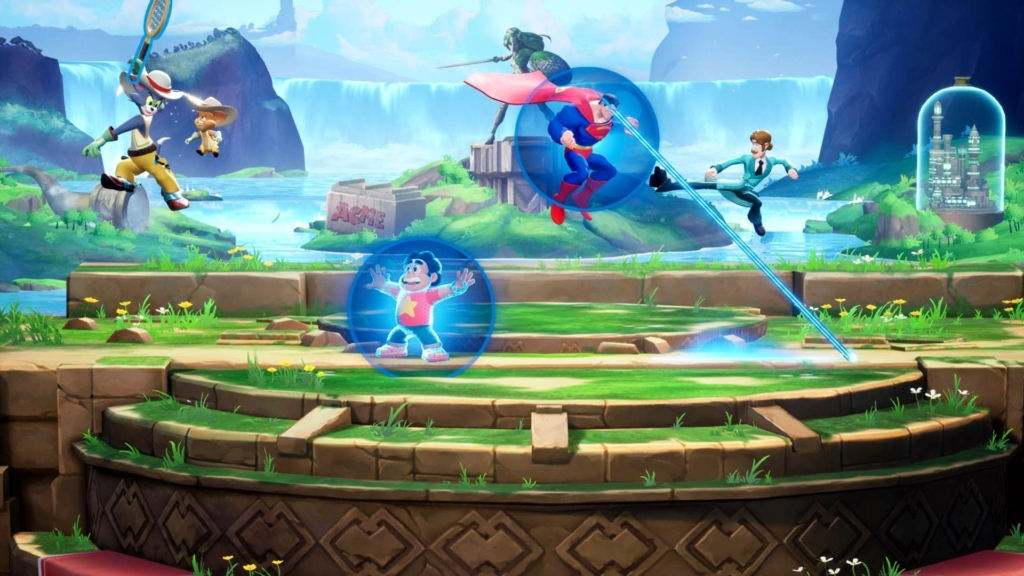
Each character has unique combat moves and special abilities that fit in with their character type. Superman, for example, can punch very rapidly and shoots vision-laser beams. Shaggy can fire Scooby Snacks at enemies, which also heal teammates if they pass close to them.
All the characters are equally powerful, but in different ways that can diminish danger. Some may be able to hit harder than others, but their attacks take longer to wind up. Meanwhile, other characters may have weaker strikes, but move faster and are therefore harder to hit. Learning each character’s moves and abilities is key to success, as is practiced skill in manipulating the characters, which move around very quickly in chaotic fights.
Prior to bouts, players can also spend earned in-game tokens to equip their characters with unique advantages, like dealing extra damage with melee hits. These are often designed to help boost allies, so choosing and stacking them carefully is useful for good teamwork. Players can also earn catchphrases and taunts which are delivered with vocal panache.
Various modes are available, including playing against humans, or bots, playing offline against friends at home. Fun variants include one in which the arena gets steadily smaller, another in which fighters become larger and slower as they deal damage, and one in which fighters have large heads. Modes change throughout different seasons, so, for example, you can expect to see snowball fights in the winter months.
Swoop in to Manage Your Kids’ MultiVersus Experiences
There are plenty of tools and ways to help you set reasonable limits on your kids’ video game experiences as they prepare to enter the combat arena.
Of course, it’s always a good idea to check the ESRB-assigned rating information to make sure it’s appropriate for your children. If possible, we also recommend that you try the game out before giving your kids permission to play or learn more about the game via online streams and videos.
Additionally, gaming consoles feature parental controls that allow you to manage what your kids play (based on the ESRB-assigned rating information), when and for how long, with whom, and whether they can spend money on new games or in-game purchases. You can find step-by-step parental control guides at ParentalTools.org.
If you’re looking for more tips about video games and online safety, visit ESRB’s Family Gaming Guide.

